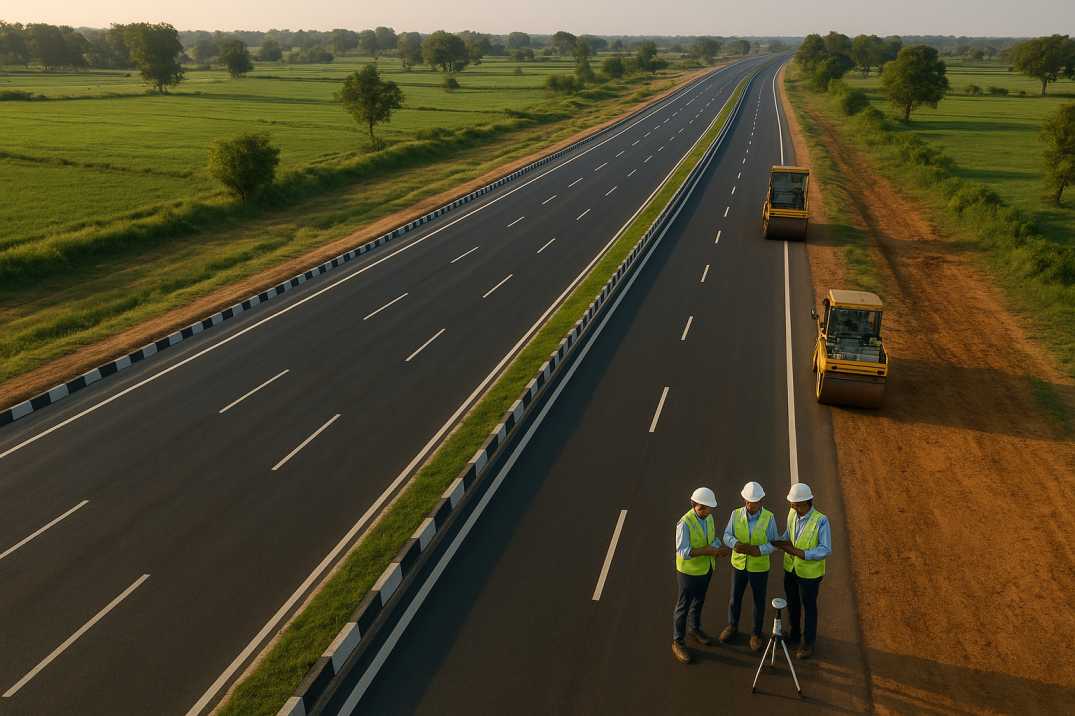Contact Us
RoadVision AI
Private Limited
Office No. 308 & 310, B Block
Ansal Chamber - 1, Bhikaji Cama Place,
Near Engineers India Limited (EIL) Bhawan, New Delhi - 110066
© 2024 | RoadVision AI | All rights reserved
When it comes to road asset management India, one standard stands out as the foundation for reliable, durable, and safe road infrastructure: IRC 110. Issued by the Indian Roads Congress, IRC 110 lays down the methodology for flexible pavement design, making it a cornerstone of modern pavement engineering in India.
As India expands its highways, expressways, and urban networks, ensuring compliance with IRC codes is not just a regulatory requirement but also a technical necessity. With the integration of AI-based pavement monitoring and digital pavement inspection, engineers can now apply IRC 110 with precision, reducing risks of premature failures.

IRC 110 is the “Guidelines for the Design of Flexible Pavements” introduced by the Indian Roads Congress. It provides a systematic approach for determining the thickness and composition of pavement layers based on traffic loading, subgrade strength, climate, and material properties.
The code replaced older empirical methods with a more scientific design approach that balances structural capacity and serviceability. Its relevance lies in ensuring that pavements not only perform well initially but also withstand India’s diverse conditions ranging from heavy monsoons to scorching summers.
Unlike outdated thumb-rule methods, IRC 110 incorporates mechanistic-empirical design principles. This means engineers can predict how pavements will behave under different traffic loads and environmental conditions.
Highway agencies, contractors, and consultants follow IRC 110 to maintain uniformity across projects. This ensures consistency in design and performance, a crucial factor for a country with a rapidly growing road network.
IRC 110 considers local soil conditions, regional climate, and axle load patterns, making it highly adaptable. This localized approach ensures pavements are resilient under India’s unique challenges.
By providing accurate design thicknesses, IRC 110 minimizes risks of early pavement failure. This reduces maintenance costs and improves lifecycle value of road projects.
Traditional pavement inspections relied on manual surveys, which were time-consuming and sometimes inaccurate. Today, digital pavement inspection and AI road survey tools ensure precise measurement of pavement conditions, traffic loads, and subgrade strength.
AI-driven analytics help validate whether pavements are designed and constructed as per IRC 110, ensuring quality control throughout the project lifecycle. The best AI road asset management company in India is now providing tools that seamlessly integrate with IRC compliance processes.
AI for Indian highways goes beyond compliance by predicting potential distresses before they occur. Using machine learning models, agencies can forecast rutting, cracking, and fatigue failures, aligning with IRC 110 requirements.
With AI-based pavement monitoring and predictive analytics, decision-makers can optimize pavement thickness, choose better materials, and improve project timelines. This not only strengthens compliance but also ensures safety and sustainability.
Modern IRC 110 compliance tools are equipped with features like traffic load modeling, digital soil testing, and automated distress detection. When paired with road inventory inspections, these tools give agencies complete visibility into pavement performance.
By integrating compliance tools with AI, agencies can reduce disputes, improve contractor accountability, and ensure every road meets IRC 110 standards.
Engineers consider IRC 110 the backbone of pavement design in India because it provides a scientific, standardized, and adaptable framework that meets the nation’s infrastructure needs. With the addition of AI-based pavement monitoring, digital pavement inspection, and AI road survey tools, compliance is no longer a challenge but an opportunity to build safer, longer-lasting roads.
RoadVision AI is revolutionizing road infrastructure development and maintenance with its innovative solutions powered by computer vision AI. By leveraging advanced technologies, the platform conducts comprehensive road condition monitoring and traffic surveys, enabling early detection of surface issues like potholes and cracks for timely repairs and enhanced roads. Through traffic congestion analysis, RoadVision AI provides data-driven insights to address traffic congestion challenges and optimize road usage. With a focus on building smarter and more efficient road infrastructure, RoadVision AI ensures full compliance with IRC Codes, helping engineers and stakeholders reduce costs, minimize risks, and improve road safety and transportation efficiency.
For agencies looking to combine IRC 110 standards with cutting-edge technology, partnering with the best AI road asset management company in India is the way forward.
Ready to transform how you manage pavements? Book a demo with us and see how AI can redefine your road projects.
Q1. What is the purpose of IRC 110 in pavement design?
It provides scientific guidelines for designing flexible pavements based on traffic, climate, and soil conditions.
Q2. How does AI improve IRC 110 compliance?
AI tools automate monitoring, predict pavement failures, and ensure construction quality matches IRC requirements.
Q3. Why is digital pavement inspection important for Indian roads?
It ensures accuracy, reduces manual errors, and provides real-time data for IRC 110 compliance.